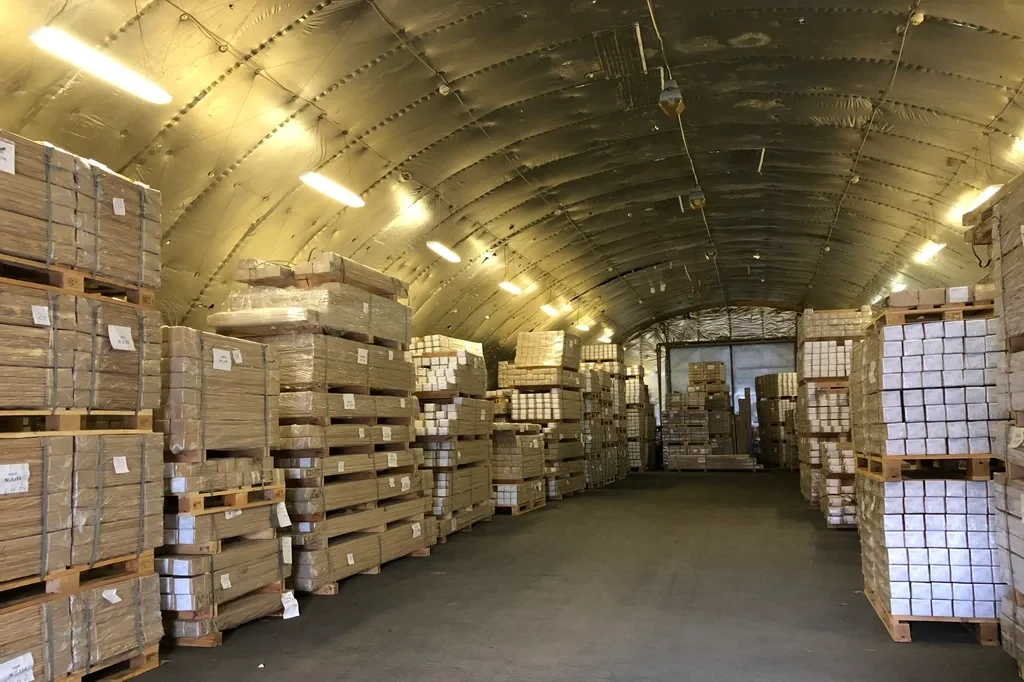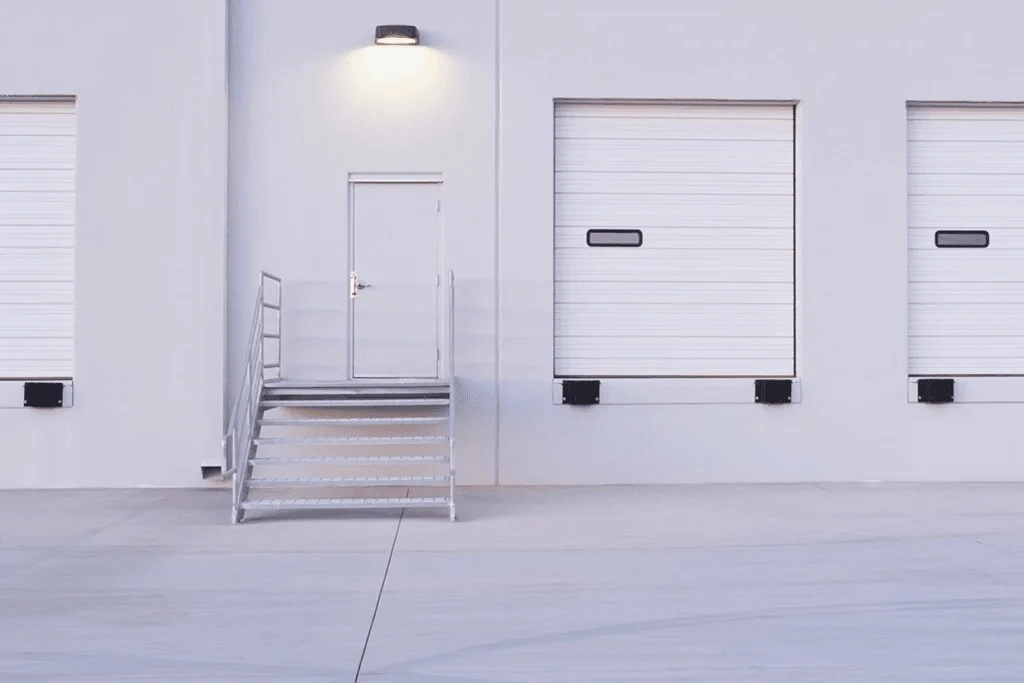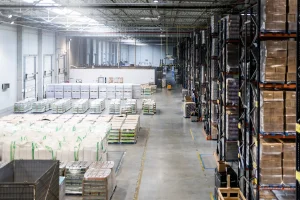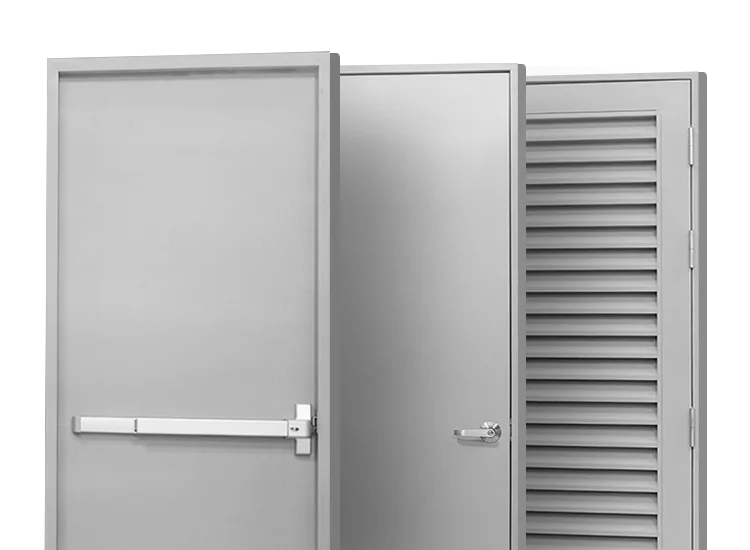Precision keeps everything running smoothly. In environments where temperature control is non-negotiable, even the smallest inefficiencies can lead to costly setbacks. Keeping products in perfect condition requires more than just cooling power—it demands a system where every component works together seamlessly.
Cold storage warehousing is built on this level of control. From the structure itself to the materials used, every decision affects the efficiency, security, and long-term performance. Even the choice of doors plays a vital role in maintaining stable temperatures and reducing energy loss.
In this article, we’ll explore the essential features that make cold storage warehouses efficient and the advantages of choosing steel doors in ensuring long-term reliability and cost-effectiveness. Let’s get into it!
What is a Cold Storage Warehouse?
A cold storage warehouse is a facility designed to store temperature-sensitive products, such as food, pharmaceuticals, and chemicals, at controlled low temperatures. These warehouses use refrigeration or freezing systems to keep products fresh and prevent spoilage. They are essential for industries that deal with perishable goods, ensuring that items maintain their quality and safety until they reach consumers or businesses. Cold storage warehouses can range from small walk-in freezers to large industrial complexes with advanced climate control systems.
How Do Cold Storage Warehouses Operate?
Cold storage warehouses operate by using a refrigeration system that maintains specific temperatures to preserve perishable goods. This system works through a continuous cycle that removes heat from the storage area.
- Coolant – This liquid or gas absorbs heat from stored products, lowering their temperature. It continuously cycles through the system to maintain the required cold conditions.
- Compressor – The compressor increases the coolant’s pressure and temperature, turning it into a high-pressure gas. This step prepares the coolant for heat release in the next stage.
- Condenser – The high-pressure gas releases heat to the outside environment, allowing it to cool down. As a result, it transforms into a high-pressure liquid.
- Receiver – This component temporarily stores the high-pressure liquid coolant. It ensures a steady supply before sending it to the next phase.
- Separator – The separator reduces the pressure of the coolant, causing it to turn into a gas-liquid mixture. This prepares it for the final cooling process.
- Evaporator – The coolant absorbs heat from inside the warehouse, cooling the air and stored products. This restarts the cycle, ensuring consistent low temperatures.

Essential Features of an Efficient Cold Storage Warehouse
An efficient cold storage warehouse must have key features to maintain product quality and operational efficiency. These features ensure proper temperature control, energy savings, and smooth logistics.
1. Advanced Temperature Control
An efficient cold storage warehouse has advanced refrigeration systems that maintain precise temperatures based on the products stored. These systems include automated sensors and monitoring tools to prevent fluctuations. Consistent temperature levels help preserve product quality and prevent spoilage.
2. High-Quality Insulation
High-quality insulation in walls, ceilings, and doors minimizes heat transfer and maintains energy efficiency. It reduces the workload on refrigeration systems, lowering operational costs. Well-insulated warehouses prevent temperature fluctuations that could damage stored goods.
3. Reliable Backup Power
A dependable cold storage facility must have backup generators to ensure continuous operation during power outages. These generators keep refrigeration systems running, preventing product loss. Without backup power, perishable goods could spoil quickly, leading to financial losses.
4. Optimized Storage Systems
Efficient warehouses use a well-organized storage system with designated zones for different temperature requirements. Racking systems and space utilization strategies help maximize storage capacity. A proper layout also improves workflow efficiency, reducing handling time and energy use.
5. Energy-Efficient Refrigeration
Modern cooling technologies, such as variable-speed compressors and energy-efficient condensers, reduce electricity consumption. Sustainable practices like heat recovery systems further improve energy savings.
6. Strict Hygiene and Safety Standards
Regular cleaning, proper ventilation, and pest control prevent contamination. Safety measures, such as slip-resistant flooring and protective gear, ensure worker safety.
7. Effective Inventory Management
Warehouse management systems (WMS) track stock levels, expiration dates, and product movement. Real-time data helps optimize storage and reduce waste.
Different Types of Cold Storage
Cold storage facilities come in different types, each designed to meet specific temperature requirements and storage needs. These types ensure that perishable goods remain fresh and safe for distribution.
Chilled Storage (Refrigerated Storage)
This type maintains temperatures between 0°C and 15°C, ideal for perishable goods like dairy, fruits, and vegetables. It slows down bacterial growth while keeping products fresh for an extended period. Many supermarkets and food distributors use chilled storage to maintain product quality before sale.
Frozen Storage
Temperatures in frozen storage range from -18°C to -30°C, preserving meats, seafood, and frozen foods. Freezing stops bacterial activity, significantly extending the shelf life of products. This type of storage is essential for industries dealing with long-term food preservation.
Blast Freezing Storage
This method rapidly freezes products at temperatures as low as -40°C to lock in freshness and prevent ice crystal formation. It is commonly used for seafood, meats, and baked goods that require quick freezing before storage. Blast freezing helps maintain product texture and quality when thawed.
Pharmaceutical Cold Storage
This specialized storage maintains temperatures between 2°C and 8°C for vaccines, medicines, and medical supplies. Some sensitive products, such as certain vaccines, may require ultra-low temperatures as low as -80°C. Pharmaceutical cold storage ensures that medications remain effective and safe for use.
Cold Chain Distribution Centers
These facilities store and distribute temperature-sensitive goods, ensuring they stay within required temperature ranges during transport. They often include multiple temperature zones for different products. Cold chain centers are critical for global food and pharmaceutical supply chains.

Common Challenges in Cold Storage Management
Managing a cold storage warehouse comes with unique challenges that can impact efficiency and product quality. Below are some common challenges and their effects:
- Temperature Fluctuations – Inconsistent temperatures may lead to product spoilage and reduced shelf life. Poor insulation, frequent door openings, or equipment failures are common causes.
- High Energy Costs – Running refrigeration systems continuously consumes a large amount of electricity. Without energy-efficient solutions, operating expenses run the risk of becoming unsustainable.
- Equipment Failures – Malfunctions in refrigeration systems, sensors, or backup power can disrupt storage conditions. Regular maintenance and monitoring are essential to prevent costly losses.
- Space Optimization – Poorly organized storage might lead to wasted space and inefficient product retrieval. Proper racking, palletizing, and inventory tracking help maximize capacity.
- Compliance with Safety Standards – Cold storage facilities must follow strict health and safety regulations. Failure to meet these standards will result in product recalls, fines, or legal issues.
- Supply Chain Delays – Transportation issues, such as delayed shipments or improper handling, can compromise product quality. Cold chain logistics must be carefully managed to prevent temperature deviations.
- Worker Safety – Employees working in freezing conditions face health risks like frostbite and fatigue. Providing protective clothing and limiting exposure time helps ensure safety.
Advantages of Steel Doors in Cold Storage Facilities
Steel doors offer several advantages for cold storage facilities, ensuring durability, efficiency, and security. These benefits help maintain optimal storage conditions while improving overall operations.
Superior Insulation
Steel doors are designed with insulated cores that help maintain stable temperatures inside cold storage areas. This reduces energy loss and keeps refrigeration systems running efficiently.
Durability and Strength
Steel is highly resistant to impacts, wear, and corrosion, making it ideal for high-traffic cold storage environments. Unlike wood or plastic doors, it can withstand extreme temperatures without warping or cracking.
Hygiene and Easy Maintenance
Steel doors have smooth, non-porous surfaces that resist moisture and bacterial buildup. They are easy to clean and meet hygiene standards required in food and pharmaceutical storage.
Energy Efficiency
By preventing temperature fluctuations, steel doors help reduce refrigeration costs. Their tight seals minimize the amount of cold air escaping, keeping the facility energy-efficient.
Security and Fire Resistance
Steel doors provide strong protection against unauthorized access and potential fire hazards. Many models are fire-rated, adding an extra layer of safety to the facility.

Enhance Your Cold Storage Efficiency with Janus Steel’s Premium Doors
Cold storage warehouses rely on precise temperature control and durable materials to keep products fresh and safe. Every component plays a role in maintaining efficiency, and doors are no exception. A well-insulated, high-quality steel door prevents temperature loss, reduces energy costs, and enhances security. Choosing the right door ensures smooth operations while protecting valuable inventory from spoilage and contamination.
At Janus Steel, we provide top-tier steel doors designed specifically for cold storage facilities. Built for durability, insulation, and hygiene, our doors help businesses maintain optimal storage conditions with ease. Whether you need custom doors that exude elegance or one that ensures safety and security, we have the expertise and quality to meet your requirements.
Upgrade your cold storage facility with Janus Steel’s reliable and energy-efficient doors—contact us today to find the perfect fit for your operations!





